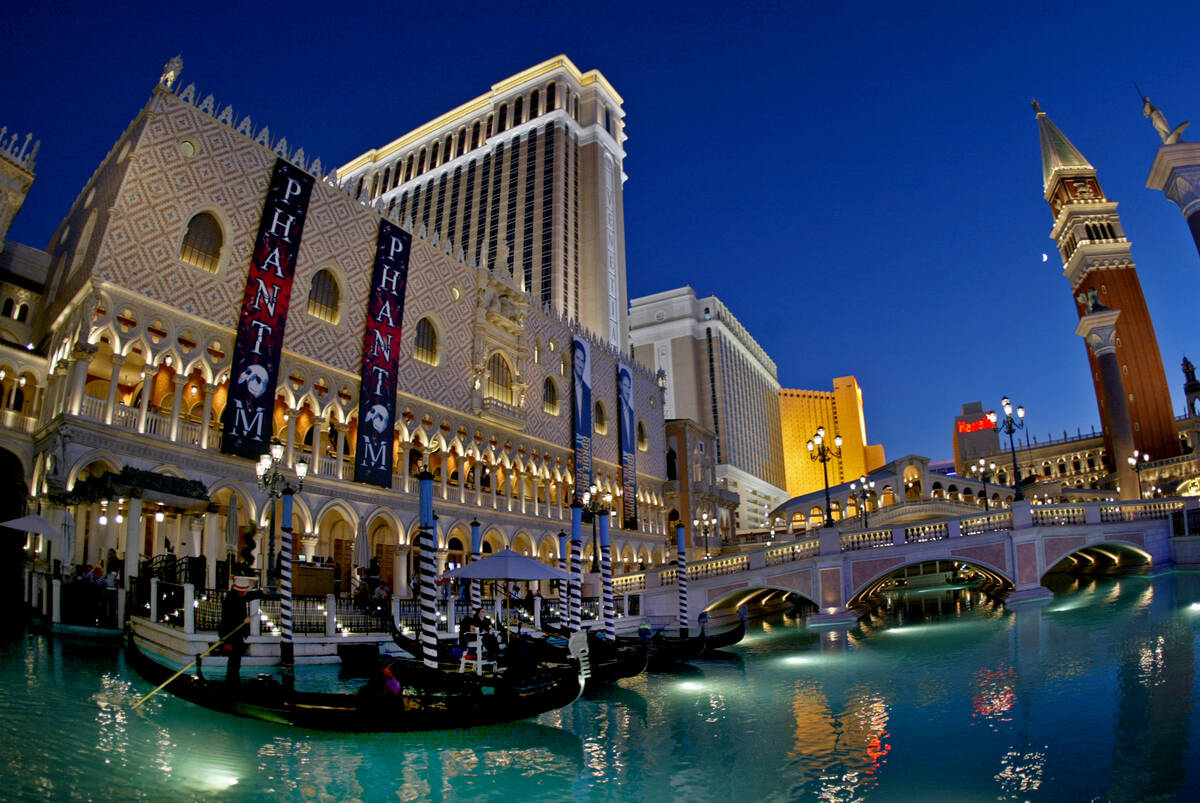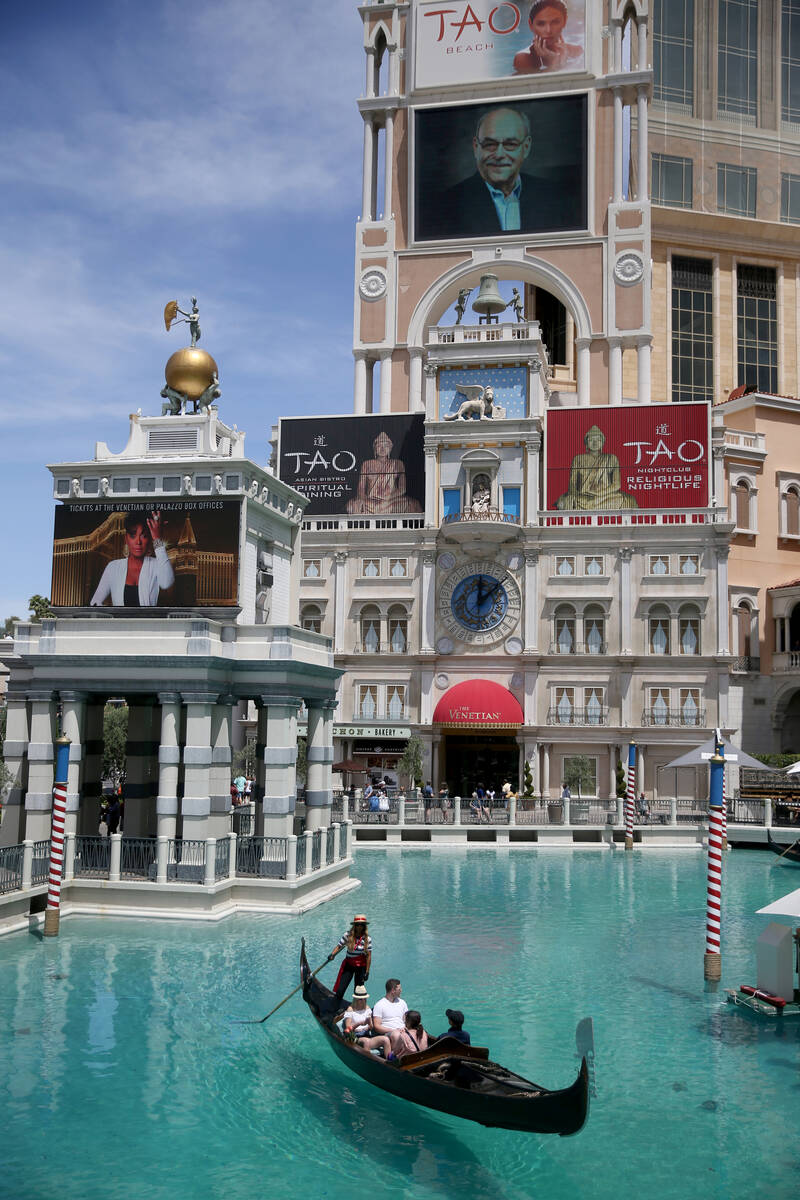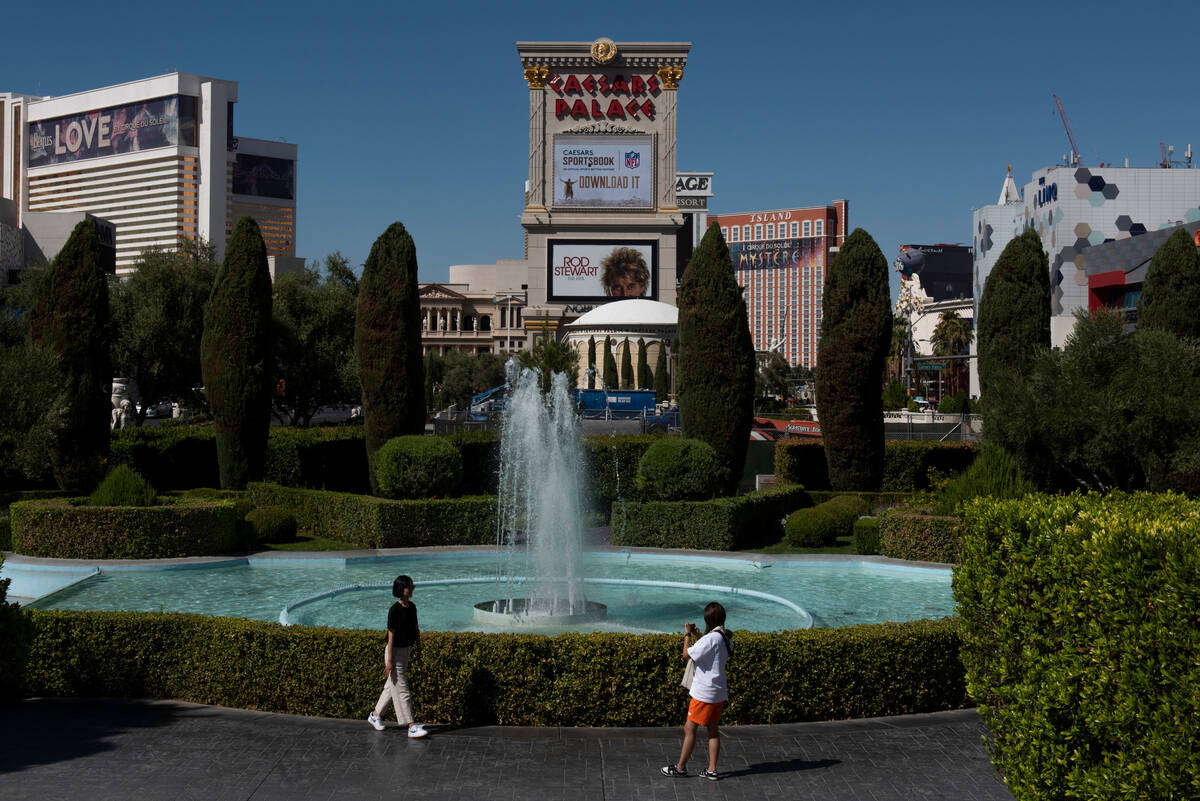Casinos are the top water users in the region. Does that show the whole picture?
Some view the Las Vegas Strip as a contradiction to the bone-dry Mojave Desert it’s situated in.
Tourists at The Venetian take rides in a makeshift canal system built to resemble Venice, marvel at one of the largest fountain shows in the world at the Bellagio and cool off in dozens of pools that evaporate gallons of fluids in the oppressive heat.
In the driest city that falls on most tourist’s bucket lists, water is still a Las Vegas attraction.
Resorts made up 80 percent of the top 50 commercial water users in the Las Vegas Valley Water District in 2023, according to data obtained by the Las Vegas Review-Journal. The top five are The Venetian, Mandalay Bay, Caesars Palace, MGM Grand and Bellagio. They used a combined 2.2 billion gallons.
Michael Green, a local historian at UNLV, said the community’s growing reliance on the tourism economy begot increased water use because of the thousands of non-residents in the region at any given time.
“The growth has been a self-fulfilling prophecy,” he said. “It grows, and we get more tourists, so the growth has to serve more tourists. We have gone from the chuck wagon buffet at El Rancho Vegas to every kind of chef you think of. We’ve gone from local little league to getting the Raiders and Golden Knights and Oakland A’s. With it, we’re going to use more water.”
Still, that information doesn’t show the full picture of Lake Mead water use. Resorts collectively account for about 6 percent of Southern Nevada’s total water use — and the majority of that water makes its way back to Lake Mead.
“You can’t swing a baseball bat on the Las Vegas Strip without hitting a casino or resort that has done something in the space of water conservation,” Southern Nevada Water Authority spokesman Bronson Mack said.
Resorts promote commitment to sustainability
Generally, resorts are proactive about recycling water. About 60 percent of water used in homes is used only once. However, 70 to 80 percent of the water used in casinos is recycled and sent back to Lake Mead, largely because a bigger share of water is utilized indoors, Southern Nevada water officials estimate.
“We could turn on every shower and every faucet in every hotel room on the Las Vegas Strip, and it wouldn’t increase the amount of water we deplete from Lake Mead,” Mack said. “All of that indoor water use gets recycled and returned back to our source.”
Nevada is allowed the most modest share of water from the Colorado River compared with its neighbors, and alfalfa alone accounts for nearly half of the river water used across seven U.S. states, parts of Mexico and several tribal nations.
As the Southern Nevada Water Authority took shape in the 1990s, the casino sector was one of the first to acknowledge its important role in water conservation.
Many operators on the resort corridor set water conservation goals as part of their corporate social responsibility efforts. At Caesars Entertainment, the resort is working toward water reduction goals of 20 percent per square foot by 2035, compared to a 2019 baseline. As of 2023, the company’s water consumption was 7 percent lower per square foot.
Eric Dominguez, senior vice president of engineering and asset management, said the company’s big drops in use came from installing low-flow fixtures, switching to native landscaping and enterprise-wide water treatment programs, among other metering and efficiencies.
“There’s no one big spout you can turn to reduce water use,” Dominguez said. “It’s a bunch of small changes that add up and over time you see the benefit.”
Similarly, MGM Resorts International has dropped its use, based on water intensity, 36.5 percent since the 2007-baseline year, Vice President of Sustainability Michael Gulich said.
The remaining 20 to 30 percent of water that is not recycled back to Lake Mead typically goes to irrigation, cooling towers and water features and pools. Often, that loss comes down to evaporation, experts said.
Operators say they still look for ways to cut water usage in those areas to address their water use reduction goals. At New York-New York, for instance, the Statue of Liberty used to sit in a pool. In recent years, the company swapped the pool out for a field of artificial turf.
“We don’t feel like it really lost that much in terms of the overall effect, but it saves a lot of water,” Gulich said.
Turning to innovation and groundwater
Water on the Strip doesn’t come solely from the Las Vegas Valley Water District. Eleven resorts have additional water rights to pump groundwater under the Strip to offset their Lake Mead water usage, particularly for consumptive uses, according to the Nevada Division of Water Resources, the agency managing permits.
Colorado River water wasn’t brought into the Las Vegas Valley until 1971. That means the smaller-scale hotels built before then relied on private wells — something many resorts still do today because they inherited the rights to do so from previous owners. For instance, the Bellagio fountains are supported by the water rights that once watered the Dunes golf course.
In a statement, a spokesperson for The Venetian said the property uses a nano water-filtration system that saves 25 million gallons of non-drinkable water annually, primarily to water plants at the Palazzo tower without using Lake Mead water.
MGM and Caesars officials similarly said groundwater is used for irrigation and to supplement water lost to evaporation in cooling towers and water features.
Addressing loss in those areas is the next step of water conservation, water and resort officials said.
“It’s getting tougher and tougher for us, I’d say,” Dominguez said. “These large resorts obviously have a lot of people coming through, and in Southern Nevada, water is such an important issue to the residents. I think the next great frontier for water use conservation is going to be evaporative loss and how do we start to curb that.”
A pilot program addressing cooling tower efficiencies at MGM is an example of a forward-looking program in the sector.
Last year, the company partnered with Formula One Las Vegas Grand Prix, the water authority and tech incubator WaterStart to combine a cooling tower and an atmospheric water generator, technology that reclaims a small portion of evaporating water within cooling towers by “wringing out the humidity in the air,” Gulich said. The partners came together to offset some of Formula One’s water use when cleaning the track during last year’s race and are now analyzing the feedback to determine whether to continue.
“It’s really a mini research project because none of us know how this is going to work,” he said of the yearlong project.
Dominguez said continued conservation efforts to reach Caesars’ sustainability goals comes from an effort to help the community and local tourism industry in the long term.
“We reset our (water use) goals (in 2019), recognizing there are diminishing returns, but we’re committed to continuing to invest in technology and ways to use water better,” Dominguez said. “We understand the pressures that we’ve got locally in Southern Nevada, and we want to do our part to help conserve water and make sure it’s available for future generations.”
Contact McKenna Ross at mross@reviewjournal.com. Follow @mckenna_ross_ on X. Contact Alan Halaly at ahalaly@reviewjournal.com. Follow @AlanHalaly on X.





















